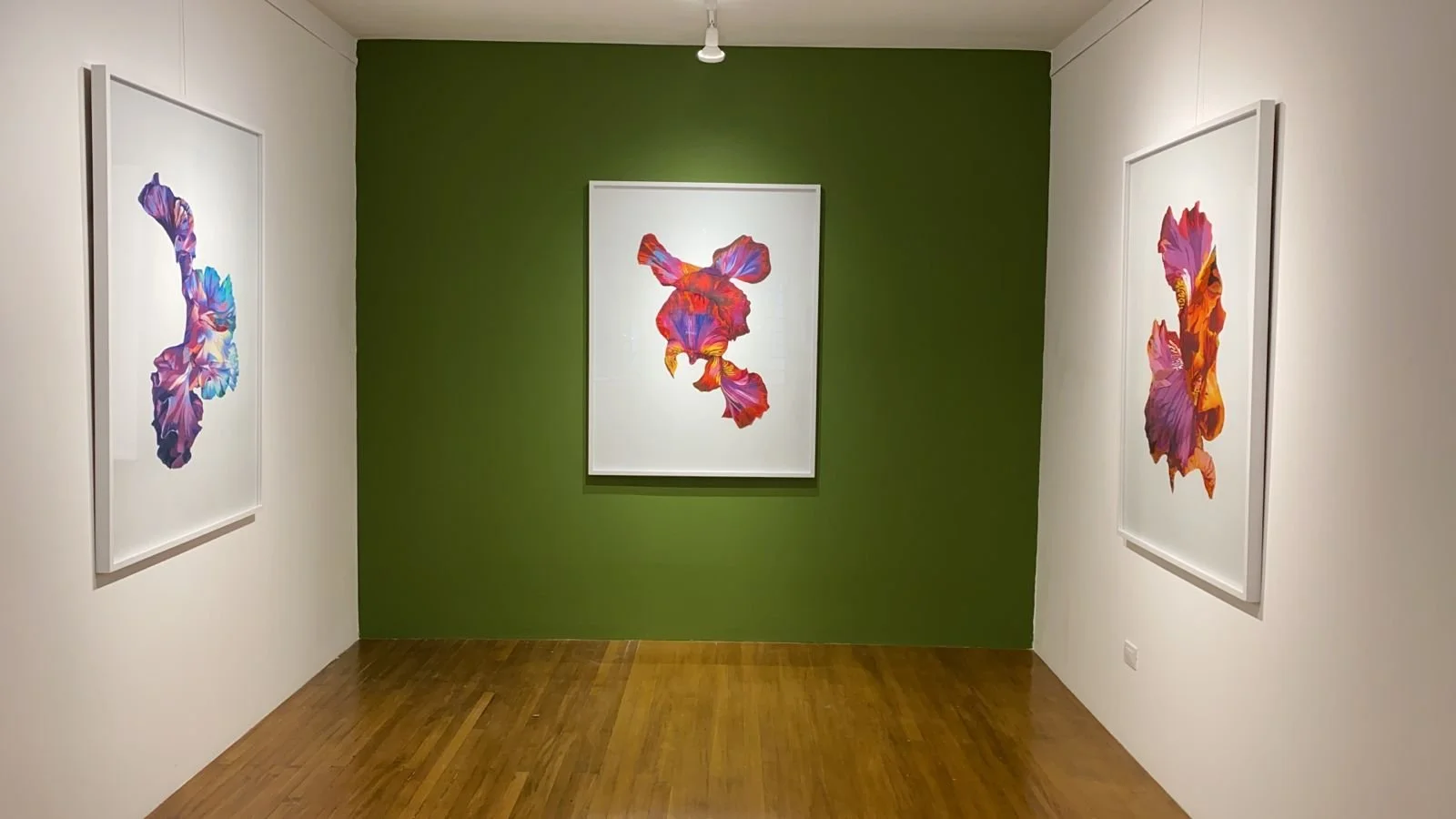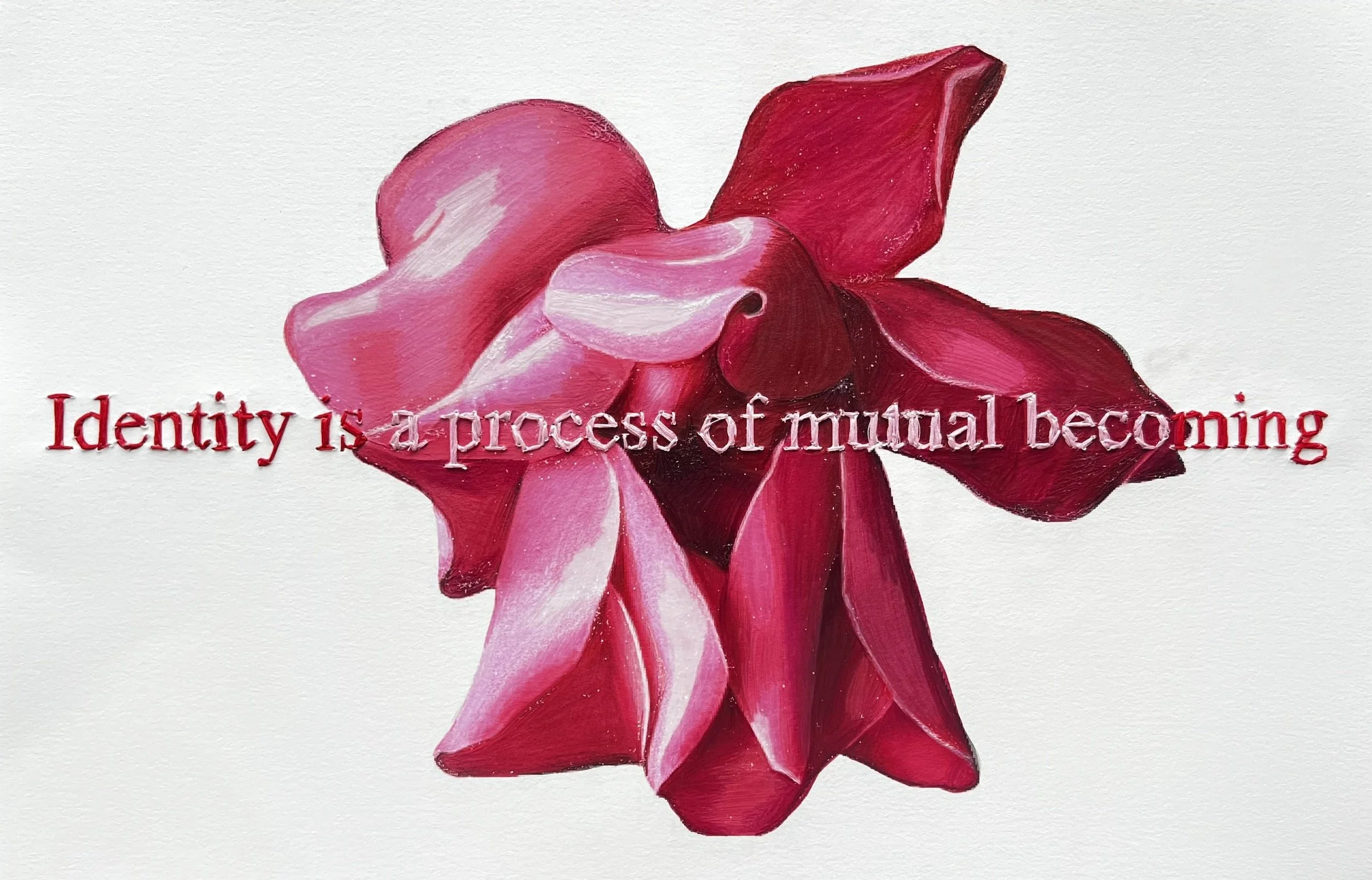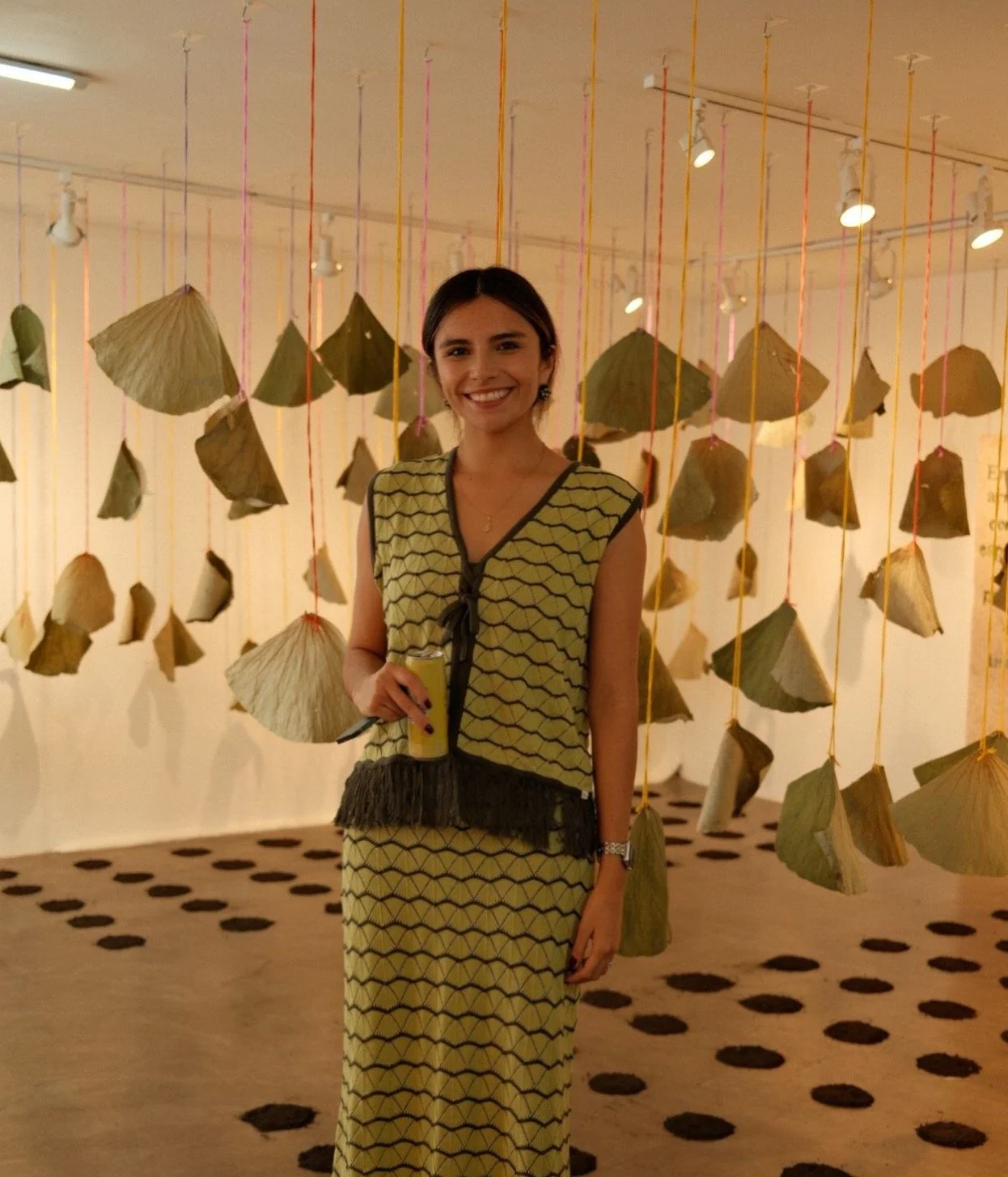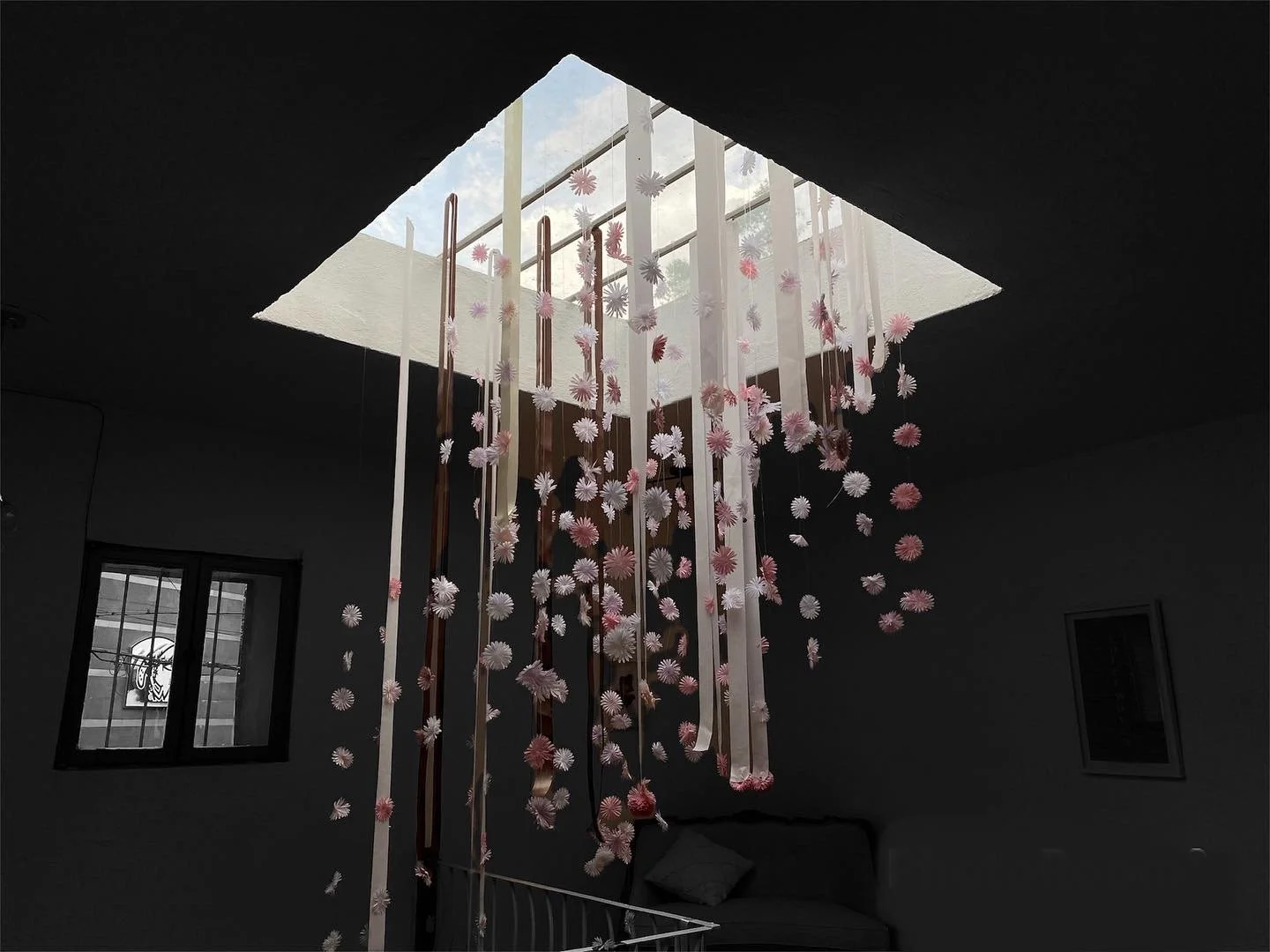Identity as Process of Mutual Becoming
At a time of global uncertainty, the United Nations celebrates its 80th anniversary with Together One World, a group exhibition held at its New York headquarters. Curated by Ann-Marie Richard, this exhibition focuses on the themes of unity and adaptability. The show gathers artists whose works offer meaningful reflections on our shared humanity, highlighting how art can foster dialogues across cultures.
Colombian artist Maria Paula Suárez was selected to represent her home country with a deeply emotional piece inspired by Colombia’s rich biodiversity. Her practice combines ecological awareness with a personal visual language, exploring identity and the emotional connection to place and belonging.
In this intimate conversation, Suárez reflects on the creation of the work she presented at the UN, sharing insights about her artistic process, how living abroad continues to influence her work, and what it means to share a message of hope through art amid ongoing global challenges.
Sofia Festa: Can you tell us more about the piece that has been selected to represent Colombia in this international exhibition at the United Nations?
Maria Paula Suárez: The piece is titled Subject to Relation. It is an embroidery on paper that combines thread, text, and drawing. I often return to embroidery and paper as mediums because they hold both fragility and resilience, qualities that reflect emotional memory and lived experience. My work explores love and language as tools for understanding and navigating the world. When Ann-Marie Richard invited me to represent Colombia, I immediately knew this piece had to explore my relationship with my country, how migration has shaped my practice, and, more importantly, how the idea of unity is rooted in our connections with one another. This felt especially relevant at a time when the world is experiencing systemic disruption.
I was honored that my work was considered, particularly because I intentionally chose to focus on Colombia’s richness and natural beauty as part of my ongoing exploration of love and resilience. While I don’t overlook our country’s history of violence, I believe that speaking of our landscapes from a romantic, hopeful perspective can be an act of quiet rebellion. I want to offer beauty and hope to a world that often feels overwhelming. If my work can bring light or a moment of peace to someone, then I know I’m on the right path.
SF: Your practice is deeply connected to the Colombian landscape and natural elements. Can you expand on how nature and territory shape your work?
MPS: I believe that plants embody a cyclical process of resilience; they are born, grow, bloom into something beautiful, and eventually return to the earth, where they decompose and nourish new life. I see a parallel with the human experience: we go through many cycles of transformation while we are still alive. This is one reason I turn to botany in my work; it helps me reflect on emotional and spiritual renewal.
In Colombia, dreamy landscapes are just around the corner, lush, vibrant, and full of contrast. There is something liberating about observing nature’s perfect imperfection, its messiness, wildness, and the uniqueness of each species. This sense of freedom and belonging, without the need to conform, deeply shapes my visual language. Colombia is one of the most biodiverse countries in the world, with its soil hosting over 130,000 different plant species thanks to its wide range of climates and ecosystems. There is a place for every plant. The country also has near-perfect conditions for flower production, which is why Colombian flowers are so renowned globally, vibrant, resilient, and expressive.
SF: What does it mean for you to maintain an artistic connection with your country while living abroad and building your career internationally?
MPS: This is an excellent question. From the very beginning, it was important for me to establish a presence in Colombia when I began my studio practice full-time. I wanted to understand the local circuits, connect with cultural agents, and absorb as much knowledge as possible about the dynamics of the Colombian art scene. It felt bold, maybe even irresponsible, to speak about my country without truly engaging with it first.
That intention aligned perfectly with my acceptance into Plataforma Caníbal, a residency program in the Colombian Caribbean. There, I had the privilege of sharing the experience with one of Colombia’s most iconic artists, Antonio Caro, and the remarkable curator Ibis Hernández. Both nurtured my practice in profound ways. This experience was pivotal; it taught me the importance of keeping my work rooted in the landscape and recognizing the multiple narratives that emerge from it, acknowledging not only the beauty but also the political, historical, and social layers embedded in it.
Years later, with a much more mature body of work, I was discovered by Otros 360 Gallery. By the time I decided to move to the U.S., we had built a strong and intentional relationship, which we have continued to nurture and expand across borders. Colombia remains at the heart of my practice. It is where my formation began, and I feel a deep responsibility to stay connected. Having a platform in Bogotá and actively participating in the Colombian art scene is not only meaningful, it’s an ongoing act of belonging.
SF: What are you currently researching or exploring in your work?
MPS: I am currently exploring the concept of territory, specifically through my research on Colombia’s flora. I am using two key references: Macondo, the fictional town at the heart of Gabriel García Márquez’s One Hundred Years of Solitude, and The Royal Botanical Expedition of the New Kingdom of Granada, led by José Celestino Mutis, a Spanish scientific project carried out in what is now Colombia.
Both references, in their own different ways, reflect what I see as a deeply human impulse: to inhabit and to name. To me, this creates an interior cartography, a kind of imagined territory that emerges from the desire to envision another world. There was a time when maps still held empty spaces, unexplored regions filled with the unknown. That idea resonates with me.
I am grounding this exploration in my practice by reflecting on how our relationship with uncertainty shapes our perception of risk. When we avoid uncertainty, we reinforce the belief that the unknown is dangerous. However, when we allow ourselves to inhabit that uncertainty, we open new neural pathways and ways of thinking and feeling that teach us to navigate unpredictability with greater openness and imagination.
SF: Are there any upcoming projects after the UN exhibition, or are there any ideas you are excited about?
MPS: I have several projects unfolding this fall that have me fully immersed in the studio. In September, I will be presenting my work at Art on Paper New York with Catalysta, the gallery that represents me in the United States.
In addition, one of my works was selected to participate in the Fundación A la Rueda Rueda Benefit Auction, an event organized in collaboration with Christie’s, which feels like such a meaningful milestone.
In October, I will be showing my work with 360 Gallery at the Estampa Art Fair in Madrid. It is a meaningful step, as it allows me to continue deepening my exploration of territory while sharing that process with a wider international audience. Finally, November will be dedicated to a beautiful partnership I am developing with Zientte, a renowned international furniture and design brand. More to come on that soon!
This interview has been edited for length and clarity.




